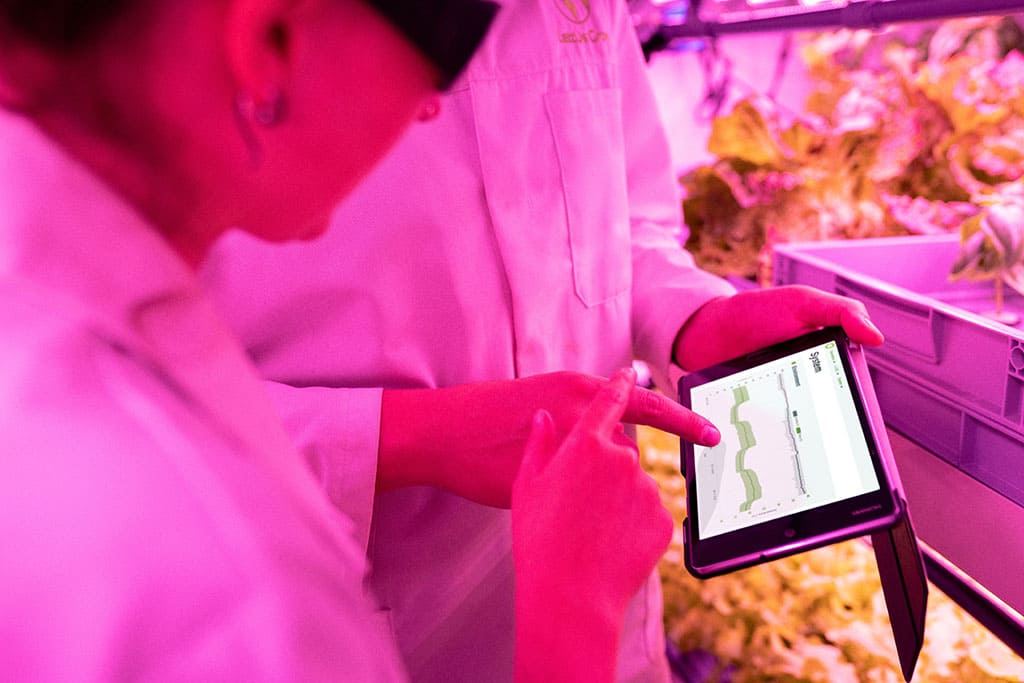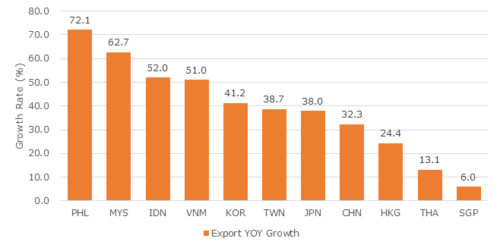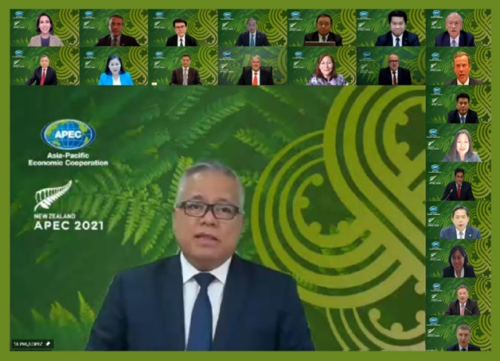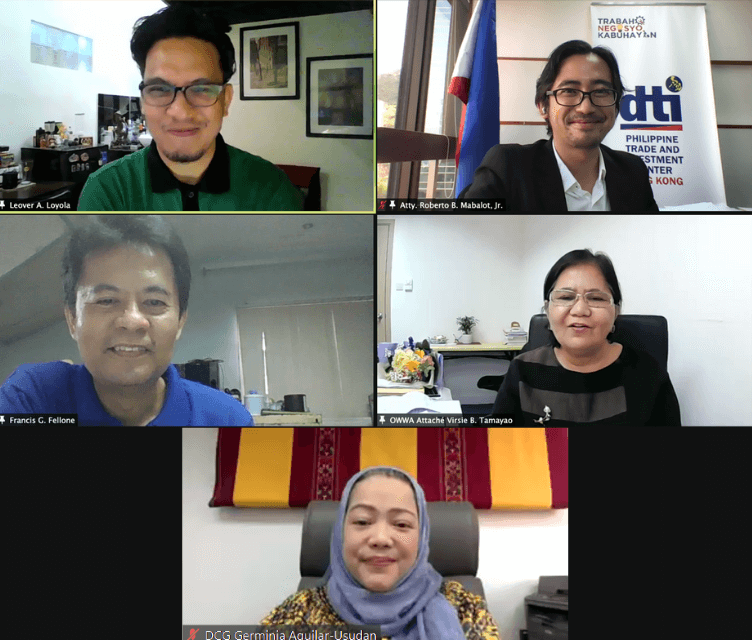As part of the Thai government’s consistent support for R&D and scaling innovation in food technology, advanced agriculture and biotechnology, the country houses integrated R&D centres linking the public sector’s high-quality facilities with universities and private sector labs. Central to the network is Food Innopolis, an integrated food innovation complex located at the Thailand Science Park, Pathum Thani Province. Under the supervision of the National Science and Technology Development Agency (NSTDA), the complex offers comprehensive services to R&D and business development, ranging from rental space for laboratory facilities, sourcing personnel and technical assistance in R&D and business development as well as applying for approvals for entrepreneurs from Food and Drug Administration. Food Innopolis also offers networking and knowledge sharing services to members and easy access to the public sector’s facilities in food technology, food standardization and food testing.
Philippines commits to deepen commercial ties with Switzerland, calls for greater utilization of FTA
The Philippines (PH) reaffirmed its commitment to expand two-way trade and investment ties with Switzerland (CH) and deepen cooperation in cleantech and renewable energy, infrastructure, life sciences and digital healthcare sectors ahead of the fourth Joint Economic Commission (JEC) to be held this week and the 65th anniversary of PH-CH diplomatic relations next year.
“We enjoin Swiss businesses…to look closer in the Philippines and assess the merits of investing into the country given the set of incentives that we offer, matched with unparalleled abundance and cost efficiency of labor and of course, access to strategic markets,” Department of Trade and Industry (DTI) Undersecretary Ceferino S. Rodolfo said during the virtual business forum entitled “Philippines and Switzerland: Investing Together for a Better Future.”
Despite the pandemic, bilateral trade between the Philippines and Switzerland rose to USD 764M in 2020 and Philippine exports to the European country rose 8% over the same period, said Usec. Rodolfo. Over the last five years, approved investments from Switzerland reached P1B as Swiss entities like Nestle, Franke Food Service, and CHAMP Cargosystems, among many others, continue to thrive and make it happen in the Philippines.
“Next year, we will celebrate the 65th anniversary of the diplomatic relationship and we build upon a good trade and investment relationship. We have been doing this relationship with you [since 1956], but if I look at our trade and investment bonds, they date back way more than a century [before] we started the diplomatic relationship,” said Alain Gaschen, Swiss Ambassador to the Philippines.
“I would really like to take this forum to convince anyone out there that investing in the Philippines is not only something that will help your business, it will also be something that could help the country,” Dr. Urs Lustenberger, President of the Swiss-Asian Chamber of Commerce said. “The Philippines is a great place, has fantastic people – a hundred million of them – which provides not only a market for themselves [but also] a good base for expansion into Asia.”
Priority Investment Sectors
Three breakout sessions were held in parallel to focus on the Philippines’ priority investment sectors. One of these sectors geared for closer collaboration is clean technology and renewable energy (RE), which is especially relevant as the Philippines seeks to increase the share of renewables to more than half of power generation mix by 2040. The investment opportunities in RE lie in upstream development, generation, retail, transmission, and distribution, according to Mylene C. Capongcol, Director, Department of Energy.
The breakout session was led by David Avery, Head of Cleantech at Switzerland Global Enterprise (S-GE) and featured insights from Marc Krebs, co-founder of Tide Ocean and Romil Jagunap, General Manager of DKSH Philippines.
Similarly, Swiss organizations can look into supporting the development of the Philippine infrastructure sector. Switzerland is a donor and shareholder of the Asian Development Bank since 1967, helping the Manila-based multilateral lender finance the growth aspirations of countries like the Philippines.
The break-out session was led by Patrick Renz, Board Member of Asian Developmen Bank (ADB) and Kelly Bird, Country Director of ADB. It featured insights from Department of Transportation Undersecretary Timothy John R. Batan and Michele Molinari, Member and CEO of Molinari Rail as well as a testimonial from Christophe Lejeune, General Manager of SIKA Philippines.
Health is another sector that can benefit from Swiss expertise, especially as the pandemic highlighted the urgent need to digitize and increase the resilience of the healthcare system.
The discussion was led by Dr. Dennis Ostwald, CEO at WifOR Institute, Sonja Haut, Head Strategic Measurement and Materiality at Novartis, and facilitated by Dr. Stephan Mumenthaler, Director General at ScienceIndustries. It featured insights from Jeff Williams of the Health Information Management Association of the Philippines, Diana Cortesi of Basel Area Business & Innovation, and Dr. Raymond Sarmiento of the National Telehealth Center.
Improving PH-EFTA Utilization
Swiss companies looking to expand their markets can leverage the PH-European Free Trade Association (PH-EFTA) free trade deal that was signed in 2018. Before the deal came into force, Swiss companies paid USD 10.5M in duties on USD 226.7M in exports per annum in 2017, according to an analysis by Professor Patrick Ziltener of the University of Zürich.
“In 2018, the year prior to entry into force of the PH-EFTA, we had a trade deficit vis-à-vis the EFTA countries to the tune of about USD 61 million. On the first full year of implementation in 2019, we turned that around so we already had a surplus of USD 47M,” said Usec. Rodolfo, adding that the experience was similar when the country’s bilateral FTA with Japan came into force.
When the deal came into effect in 2018, Swiss companies exporting to the Philippines managed to save roughly USD 234,000, but still shelled out USD 7M in duties, Ziltener’s study shows. In 2019, the year completely covered by the FTA, the utilization rate of PH-EFTA was around 14% and low on a product-by-product basis, with food preparation and pharma having low utilization rates, while textiles, many metal products, and machines at 0%. “Utilization to increase over time…but proactive information campaign seems necessary,” Ziltener noted.
In a separate study, Ambassador Markus Schlagenhof, State Secretariat for Economic Affairs, cited how Philippine exporters to Switzerland saved roughly half a million Swiss francs in 2019 thanks to PH-EFTA, translating to a 24% savings rate. Swiss companies exporting to the Philippines saved CHF 1.3M or 20% savings rate over the same period.
“We all agree these rates are still very low but the agreement is also very young…and the potential is still largely underutilized. I am confident that when economic cooperators learn more about this agreement, we further have to promote it, in a couple years’ time, it certainly will be much higher than it is right now,” Schlagenhof said.
The webinar was organized by the Philippine Trade and Investment Center in Bern together with the DTI Board of Investments, Philippines-Swiss Business Council, and the Swiss Embassy in Manila in coordination with Switzerland Global Enterprise and the Swiss-Asian Chamber of Commerce. It is part of an ongoing initiative to start a conversation on rebooting the economy through investments in targeted sectors.
Source: www. dti.gov.ph
Originally published last June 18, 2021.
Read the full article here.
MANILA – Allowing 100% operating capacity even during the Enhanced Community Quarantine (ECQ), coupled with the gradual economic recovery of its major trading partners from the COVID-19 pandemic, Philippine exports in April 2021 were up again, this time by a hefty 72.1%, to USD 5.71B from USD 3.32B in the same month last year, preliminary data from the Philippine Statistics Authority (PSA) showed. The country’s growth rate was the highest among select Asian economies surpassing even that of Japan’s 38.0% and China’s 32.3% growth rates.
Department of Trade and Industry (DTI) Secretary Ramon M. Lopez noted that this was the second consecutive month of positive year-on-year (YOY) growth, following the 33.3% revised growth rate in March. Cumulative export earnings from January to April 2021 amounted to USD 23.37B, up by 19% from the USD 19.63B in the same period in 2020.
“Our latest export growth rate shows that we are steadily recovering from the negative impact of the COVID-19 pandemic. It can be considered a solid growth considering that the performance was even stronger than the pre-pandemic levels in 2019, and not just due to the low base in 2020. The recorded amount of USD 5.71B for April 2021 was higher than the recorded amount of USD 5.65B in 2019.”
Meanwhile, for year-to-date (YTD) exports, or from January to April 2021 figures still showed improvement, posing USD 23.37B. This is a huge increase compared to the 2020 YTD of USD 19.63B and also growth from the pre-pandemic YTD exports of USD 22.23B.
Semiconductors are still the top export product, comprising 42.2% of all exports. Exports of the said product grew by 40.4% YOY.
Out of all the export products, ignition wiring sets for vehicles, aircraft, and ships had the highest growth at 1,237.6%. This was followed by metal components at 345.2%.
Sec. Lopez shared that looking at the total trade data, the YOY doubling in imports of manufacturing inputs such as raw materials and intermediate goods (118.6%) and capital goods (104.8%) also signals that local manufacturing is ramping up.
China was the country’s top export market in the review period, receiving 16.7% of all exports, followed by the United States (US) at 15%. Both markets are experiencing brisk economic recoveries, which bodes well for the Philippines.
In April, China’s imports growth reached a decade high of 43.1%, the highest since 2011. In the US, there were 742,000 new jobs in the private sector, with the leisure and hospitality sector opening up and hiring 237,000 workers in the said month.
Other top markets were Japan (14.3%), Hong Kong (12.9%), and Singapore (5.5%). By region, the Philippines exported half of its goods to East Asia.
To maximize the gains from the revival of the global economy, Sec. Lopez mentioned DTI is working to increase market access. He also stated that DTI is pushing for the ratification of the Regional Comprehensive Economic Partnership (RCEP) this year, to open more market opportunities and further boost exports for the country.
“As we gradually and safely reopen our economies both locally and abroad, we are confident that we will see a sustained improvement in our export growth rate this year,” said the trade chief.
According to the United Nations Conference on Trade and Development (UNCTAD), the positive outlook for 2021 remains largely dependent on subsiding pandemic restrictions. Nevertheless, the fiscal stimulus packages, particularly in developed countries, are expected to strongly support the global trade recovery throughout 2021.
Originally published last June 11, 2021
Source: https://www.dti.gov.ph/news/exports-growth-accelerates-april-up-72/
Department of Trade and Industry (DTI) Secretary Ramon M. Lopez, together with fellow Trade Ministers, called for the urgent collective action at the global level to enhance access to vaccines and critical, life-saving goods at the Asia-Pacific Economic Cooperation (APEC) virtual Ministers Responsible for Trade (MRT) Meeting held on 5 June 2021. New Zealand chairs APEC this year with the theme, “Join, Work, Grow. Together.”
At the meeting, Sec. Lopez stressed that achieving herd immunity remains to be one of the Philippines’ top priorities. He said, “If there is one urgent matter that APEC can address, it is broadening the reach and access of vaccines for humanity.”
The trade chief also welcomed discussions happening at the World Trade Organization (WTO) to aid global production of vaccines and called for an open approach to democratize the manufacture and distribution of vaccines through technology transfer, compulsory licensing, and time-bound licensing of intellectual property rights. The MRT meeting was attended by Ministers from countries that are responsible for majority of the world’s COVID-19 vaccine production.
Sec. Lopez pointed out that the enormous production capacity of Asia and Latin America remains untapped.
“Governments, private sector, and research institutions must work together to stimulate broader vaccine production and unhampered distribution of quality and affordable vaccines and essential goods,” he explained.
Meanwhile, on trade reforms, Sec. Lopez announced that the Philippines has established its trade facilitation committee in compliance with the WTO Trade Facilitation Agreement to reduce the cost of trade transactions and improve international trade.
To contribute to a successful 12th WTO Ministerial Conference, the trade chief also underscored the importance of safeguarding and modernizing the WTO through reforms to improve its dispute settlement and negotiating functions. He said, “APEC should ensure that the WTO dispute settlement process remains relevant and fully functional.”
APEC has a long history of providing leadership in WTO issues especially in the next-generation trade issues such e-commerce, women’s economic empowerment, investment facilitation, and services. In particular, the Philippines championed the integration of micro, small, and medium enterprises (MSMEs) in trade, which has led to the creation of the Informal Working Group on MSMEs at the WTO, currently made up of 91 member countries. APEC Trade Ministers successfully concluded the meeting by issuing a statement on APEC’s strong commitment to bolster actions in tackling the impacts of the COVID-19 pandemic and in enabling a strong economic recovery for all people. The Trade Ministers also welcomed two outcome documents: (1) Statement on COVID-19 Vaccine Supply Chains and (2) Statement on Services to Support the Movement of Essential Goods.
Originally published last June 9, 2021.
Source: https://www.dti.gov.ph/news/dti-urges-equitable-access-covid19-vaccines-apec-mrt-meeting/
The Philippines: DTI-Hong Kong launches Trabaho, Negosyo, Kabuhayan Series on OFBank digital banking
The Philippine Trade and Investment Center – Hong Kong Special Administrative Region (SAR) or PTIC-HK conducted a Trabaho, Negosyo, Kabuhayan (TNK) webinar series entitled “OFBank Digital Banking, Be E-Safe” together with the Philippine Consulate General Hong Kong SAR (PCGHK), Overseas Workers Welfare Association (OWWA), and Overseas Filipino Bank (OFBank) on 9 May through Zoom.
PTIC-HK invited LandBank of the Philippines’ Overseas Representative Officers, Mr. Leover A. Loyola (South Korea and Taiwan) and Mr. Francis G. Fellone (Middle East) as speakers. During the main part of the webinar, the speakers underscored the importance of using safe online bank and provided information regarding the different kinds of schemes and guidance on how our Overseas Filipino Investors (OFIs) may avoid falling into these traps.
In the opening remarks, Deputy Consul General (DCG) Germinia Aguilar Usudan, in her special message to the 332 OFIs who attended the webinar through Zoom and the thousands who watched the video in Facebook, emphasized that it is not impossible for our OFIs to also be business owners in the future. DCG shared the story of an OFI in Indonesia who makes batik barongs which are worn by celebrities and Indonesians; and the story of Michael Cinco in Dubai who makes gowns for the royal family in Middle East and celebrities around the world.
During the closing remarks, Welfare Attaché Ms. Virsie B. Tamayao related the topics discussed in the webinar to the reintegration of our OFIs in the Philippines when they come back home and expressed her appreciation to officials of OFBank in providing valuable information regarding safety of e-banking.
The webinar aimed to provide a discussion on the different types of scams that one may encounter when e-banking services are used, and it offered instructions to the OFIs on ways to avoid falling in these schemes.
For more information, please visit PTIC-HK’s microsite or send an email to Hongkong@dti.gov.ph. You can also review the full webinar on the official social media accounts of PTIC-HK on Facebook.
Originally published last June 1, 2021
Source:https://www.dti.gov.ph/overseas/hongkong/hongkong-news/tnk-ofbank-digital-banking/
Food waste is a colossal problem, around the world, including in Southeast Asia. It damages global economic and environmental resources. The wastage of food comes with a huge price, as it consequently results in hiking the food prices. Then there is loss of land, water, and biodiversity, in addition to the negative impacts of climate change.
Tech and tech-driven business models have huge potential in reducing food wastage across the value chain. They can deliver a high return on investment for both traditional and foodtech companies. In many countries, food waste management is handled by governments. But the gravity of the issue is such that mere government-level efforts are inadequate. Recently, several entrepreneurs have given serious attention to this problem, and they have come up with innovative tech solutions. There are mainly three broad categories in food waste management: food waste prevention, food redistribution, and food waste recycling.
Food waste prevention
It refers to the prevention of food waste before it happens. Essentially, companies working in this space try to help restaurants/hotels/eateries prevent and minimise food waste from being generated.
Solutions coming out of Singapore are offering solutions to tackle this, by allowing chefs to have an overview of their food waste and receive feedback. This uses Artificial Intelligence and data analytics to provide insight into wasted food. From the Philippines, technology is working to prevent the problem that leads to food waste, by offering a purchasing system makes sure that orders for food are placed only when the inventory drops to a designated level.
Food redistribution
There are many tech and non-tech companies and charity organisations around the world that take surplus food from restaurants and hotels and redistribute it to the needy. Southeast Asian companies are offering many options. From B2B platforms allowing suppliers to redistribute their unsold inventory and middlemen who redistribute surplus stock of food and beverages companies, to a Thai app, that brings together restaurants and shops and consumers, for leftovers at the end of the day, thereby preventing food from being thrown out. In Malaysia, people can shop in “social supermarkets” that sell food that might be close to expiring or does not look perfect, regardless of its freshness, and that is rejected by other stores.
Food waste recycling
Food waste generated by households, restaurants, and corporations mostly end up in landfills, and its decomposition contributes to greenhouse gas emission, which can harm our environment. Some companies have found a way to address this issue by converting food waste into compost and energy. This allows food waste that comes from the farms to go back to the farms as fertiliser for future food, or is used in a biogas plant.
VCs are noticing
Of late, venture capitalists have started pouring money into the sector. During the 2018-2021 period, about US$1.4 billion was invested in food waste management startups around the world. But this amount is paltry when compared with the billions of dollars pouring into other food-tech verticals, such as food delivery and cloud kitchen.
Industry experts say that there is a lot of investor appetite in the food space around the world at the moment. Besides this, sustainability as an investment trend is popular at the moment and that will accelerate the capital flow into the sector.
More exporters and shippers have joined calls for the government to step in and address the current maritime transport issues, including vessel capacity constraints and surging freight prices, which are leading to cargo delays and revenue setbacks.
After the processed food and fresh food exporters, garment and furniture exporters have taken their turn to express frustration and ask for help with the deteriorating container shipping situation in the Philippines.
Robert Young, Philippine Exporters Confederation, Inc. (PHILEXPORT) trustee for the textile sector and president of the Foreign Buyers Association of the Philippines (FOBAP), said the garment industry is incurring millions of dollars in losses due to the supply chain squeeze.
"The issue of vessel space availability is a huge one for us and our clients. Delay is between two weeks to almost two months", said one garment company. "We are seasonal holiday heavy and [it is] very critical that goods move on time as they have a short selling period."
This situation is creating production space issues which are creating a domino effect, [such as] continuing delays in our shipment. "My concern is that even if vendors finish production of their orders, if they are not able to move [the goods], they don't get paid, [creating a] cash flow issue", said another.
This, along with other issues such as the slow release of permits and import license, rising cost of natural materials, and shortage of raw materials, adds to manufacturing costs and leads to continuing loss of business in favor of Vietnam and Indonesia, one exporter added.
Meanwhile, furniture exporters have asked the Chamber of Furniture Industries of the Philippines to help them find slots on vessels and address soaring freight rates.
Cost of freight has gone up from around $4,000 per 40-foot container to $12,000, revealed one shipper, adding this makes their products uncompetitive.
"We hope that we can resolve this soon as the worst is yet to come", the exporter said, referring to the approaching peak shipping season. The third quarter and fourth quarter surge of exports might be a nightmare with this current setup.
PHILEXPORT president Sergio Ortiz-Luis, Jr. earlier said that while this is a global issue that may be beyond anyone's control, the government and private sector must still work closely together to effectively address the logistics constraints.
Last week, PHILEXPORT reported on the difficulties encountered by food exporters in getting their shipments on international shipping lines to their customers overseas.
The Export Development Council-Networking Committee on Transport and Logistics (EDC-NCTL) held an online discussion recently with the Maritime Industry Authority (MARINA), PHILEXPORT and domestic ship owners on the unavailability of vessel space.
Among the recommendations, which will be presented to the appropriate agencies, is to encourage domestic ship owners to operate within the region to expand vessel capacity.
PHILEXPORT committed to conduct a poll among its member exporters to identify the routes where domestic vessels can focus their operations. These priority routes are those that have sufficient volumes to and from the Philippines so local ship owners will see the viability of taking the risk to launch new services.
EDC-NCTL chair Dr. Enrico L. Basilio welcomed Philippine-based logistics service provider Royal Cargo's commitment to provide its ships to transport export cargoes to their ports of destination in the region.
Royal Cargo CEO Michael Raeuber disclosed that the company has already applied for a franchise with MARINA to be able to do so.
Also suggested is for MARINA to facilitate the issuance of a Certificate of Public Convenience so domestic ships can go ahead and provide the regional service.
Source: PHILEXPORT News and Feature
Thumbnail: "Shipping container ship" by BigStock Images
Photo: "Shipping container ship" by BigStock Images
Philippine cosmetic companies are advised to ensure their notified products meet the labeling and packaging requirements stipulated under the Asean Cosmetic Directive.
In a webinar, Maria Lynette Macabeo, Food Drug Regulation Officer II at Food and Drug Administration (FDA)-Center for Cosmetics Household/Urban Hazardous Substances Regulation and Research, said the directive's Appendix II identified what comprises labeling, immediate packaging, and outer packaging.
She said labeling is the information written or printed or graphic matter on the immediate or outer packaging and any form of leaflets; immediate packaging is the container or other form of packaging immediately in contact with the cosmetic product; while the outer packaging refers to where the immediate packaging is placed.
Macabeo said the Asean cosmetic labeling guidelines include product content in weight or volume, brand and product name of the cosmetic product and its function, batch number, manufacturing/expiry date of the product in clear terms, and country of manufacture.
"Brand name is the name which may be invented or after a company name or a brand line or product line, and then the product name, this is what your product is… That's the difference between brand name and product name for cosmetic establishments that will apply for product notification," she said.
"On the expiration date, for the manufacturers here, if your product has less than 30 months shelf life (or) 2.5 years, it is required for you to declare the expiration date. But if (the shelf life of your product is) more than 30 months, you have the option to declare or not the expiration date of our products," she added.
Macabeo said the back panel of the products lists instructions for use, a full Ingredient list in descending order, special precautions if any, and the name and complete address of the company or person responsible for placing the product in the market.
She said companies applying for cosmetic product notification should indicate in the label the same product declared or specified in their application.
“Because once it is different, it would be considered a different product or unnotified since there is inconsistency in the declaration of ingredients,” Macabeo said in mixed English and Filipino.
She said the agency does not have an exhaustive list of packaging for cosmetics "as long as our packaging does not affect the stability of the cosmetic product."
In cosmetic packaging, in cases where the size, shape, or nature of the container or package does not permit or cannot fit the labeling requirements, Macabeo said leaflets/ pamphlets, hang tags, peel off labels, and shrink wrap shall be allowed.
However, the name of the cosmetic product and the manufacturer's batch number shall appear on the immediate packaging, she said.
"In labeling, it is not necessary that what we have mentioned should be the only ones specified in the front or back panel. It's up to you, we do not limit the companies with regards to the design of their cosmetic products," she added.
Macabeo said cosmetic products are substances or preparation intended to be placed in contact with the various external parts of human body or with the teeth and the mucous membranes of the oral cavity, with a view exclusively or mainly to cleaning them, perfuming them, changing their appearance and/or correcting body odor and/or protecting the body, or keeping them in good conditions.
Source: PHILEXPORT News and Feature
Thumbnail: "Cosmetics no label" from Pinterest
Photo: "Cosmetics no label" from Pinterest
More exporters and shippers have joined calls for the government to step in and address the current maritime transport issues, including vessel capacity constraints and surging freight prices, which are leading to cargo delays and revenue setbacks.
After the processed food and fresh food exporters, garment and furniture exporters have taken their turn to express frustration and ask for help with the deteriorating container shipping situation in the Philippines.
Robert Young, Philippine Exporters Confederation, Inc. (PHILEXPORT) trustee for the textile sector and president of the Foreign Buyers Association of the Philippines (FOBAP), said the garment industry is incurring millions of dollars in losses due to the supply chain squeeze.
"The issue of vessel space availability is a huge one for us and our clients. Delay is between two weeks to almost two months", said one garment company. "We are seasonal holiday heavy and [it is] very critical that goods move on time as they have a short selling period."
This situation is creating production space issues which are creating a domino effect, [such as] continuing delays in our shipment. "My concern is that even if vendors finish production of their orders, if they are not able to move [the goods], they don't get paid, [creating a] cash flow issue", said another.
This, along with other issues such as the slow release of permits and import license, rising cost of natural materials, and shortage of raw materials, adds to manufacturing costs and leads to continuing loss of business in favor of Vietnam and Indonesia, one exporter added.
Meanwhile, furniture exporters have asked the Chamber of Furniture Industries of the Philippines to help them find slots on vessels and address soaring freight rates.
Cost of freight has gone up from around $4,000 per 40-foot container to $12,000, revealed one shipper, adding this makes their products uncompetitive.
"We hope that we can resolve this soon as the worst is yet to come", the exporter said, referring to the approaching peak shipping season. The third quarter and fourth quarter surge of exports might be a nightmare with this current setup.
PHILEXPORT president Sergio Ortiz-Luis, Jr. earlier said that while this is a global issue that may be beyond anyone's control, the government and private sector must still work closely together to effectively address the logistics constraints.
Last week, PHILEXPORT reported on the difficulties encountered by food exporters in getting their shipments on international shipping lines to their customers overseas.
The Export Development Council-Networking Committee on Transport and Logistics (EDC-NCTL) held an online discussion recently with the Maritime Industry Authority (MARINA), PHILEXPORT and domestic ship owners on the unavailability of vessel space.
Among the recommendations, which will be presented to the appropriate agencies, is to encourage domestic ship owners to operate within the region to expand vessel capacity.
PHILEXPORT committed to conduct a poll among its member exporters to identify the routes where domestic vessels can focus their operations. These priority routes are those that have sufficient volumes to and from the Philippines so local ship owners will see the viability of taking the risk to launch new services.
EDC-NCTL chair Dr. Enrico L. Basilio welcomed Philippine-based logistics service provider Royal Cargo's commitment to provide its ships to transport export cargoes to their ports of destination in the region.
Royal Cargo CEO Michael Raeuber disclosed that the company has already applied for a franchise with MARINA to be able to do so.
Also suggested is for MARINA to facilitate the issuance of a Certificate of Public Convenience so domestic ships can go ahead and provide the regional service.
Source: PHILEXPORT News and Feature
Thumbnail: "Shipping container ship" by BigStock Images
Photo: "Shipping container ship" by BigStock Images























